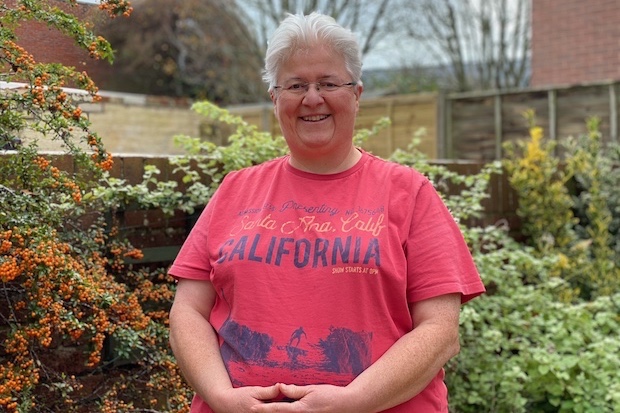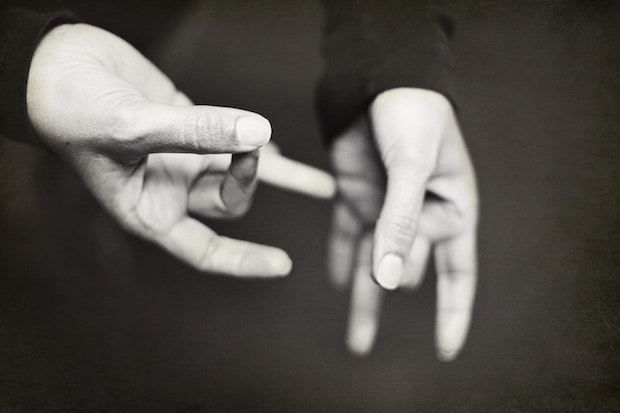
Earlier this year, when I shared my experience on working from home during the pandemic, some disabled colleagues observed that a large proportion of civil servants working flexibly, provided new opportunities for greater inclusion and line manager empathy. Conversely, I’m aware that remote working and our increasing reliance on technology also impact our disabled colleagues in other ways.
Below, Simon Skerritt, Chair of the Civil Service Deaf and Hard of Hearing Network and Sue Reeves, Chair of the Civil Service Disability Network explain how their own disabilities have impacted their lives and share their experiences.

Simon's personal experience of hearing loss
I have been hard of hearing for most of my life. As a child, I wore grommets and tee tubes, (small tubes inserted into the ear drum to prevent fluid building up in the middle ear) and relied on hearing aids ever since.
I often felt isolated and there have been times in previous jobs, where I was the butt of jokes such as, “I hear we have Radio 1 in the office,” when my hearing aids beeped. I was made to feel stupid because I couldn’t hear.
Many times, I just said 'yes' because I couldn’t hear what a person was saying when I felt uncomfortable and just wanted to leave. These experiences were a long time ago, and things have changed so much for the better. But my feelings of isolation and wanting to support others inspired me to establish the Civil Service Deaf and Hard of Hearing Network.
How has this changed during COVID-19?
The opportunity to work flexibly has been positive for my work/life balance and I no longer need to commute, although I recognise that some people miss being in an office environment. Working from home has reinforced the importance of Workplace Adjustments. It is important to ensure that all deaf and hard of hearing staff have the support they need, such as the right equipment and technology to work effectively at home.
In my experience, virtual meetings have been a challenge particularly when people don’t use cameras for lip reading. It can also be difficult to keep up with what is being discussed. Accessing captions on IT systems has been challenging, some systems have captions but there is no consistent approach because of the variety of software platforms.
For me, the situation has reinforced the importance of having regular discussions with your line manager and colleagues, to help support your mental wellbeing.
Accessible virtual meetings
Virtual meetings can be challenging for people who are deaf or have hearing loss. Here are some tips to make them more accessible:
- Choose the best platform for you because accessibility features vary
significantly. Often the choice of platform will be limited to what your
department uses. It's good to ensure that everyone knows what
features are available. - If British Sign Language (BSL) interpreters are required, it’s good
practice to ensure there are two to communicate, using BSL for
participants who sign. Use an agenda and stick to it. - Talk to one person at a time – and agree a system for how
participants can join the conversation, e.g. raising a virtual hand.
Don’t cover your mouth or obscure your lips. - Speak at a moderate pace, to allow people to digest information
which can help with captioning. - Think about your location, find somewhere quiet with a neutral
background. - Avoid jargon and use plain language. Using chat facilities to
supplement what has been said can be helpful.
Sue’s experience of face coverings
Having been deaf since birth, I’m used to not hearing what people say, but with face coverings, I have found things more difficult. A recent visit to a coffee shop with my partner, highlighted the issues I regularly face, talking to someone wearing a mask.
When I ordered coffees, the barista wore a face covering. However, this meant I was unable to lip read, and the confusion was made worse by the music and loud coffee machine. When he asked, what type of coffee I wanted, I just couldn’t hear him. I was pleased to learn later, there are downloadable cards from Gov.uk that can be printed out, where you can ask people to remove their mask to facilitate communication. There are also live speech-to-text apps available, although the translation quality can vary.
Overall, it is encouraging to see the Civil Service Deaf and Hard of Hearing Network raising awareness among line managers and colleagues about the challenges those with hearing loss may encounter relating to face coverings.
Useful resources
● Action on Hearing Loss COVID-19 microsite
● Civil Service Deaf and Hard of Hearing Network
Simon and Sue’s experiences are an important reminder to consider the needs of our colleagues. It’s great that we have access to technology to enable us to work from home effectively, we must ensure that it’s accessible, and the tips shared can help to make this new way of working more inclusive.

6 comments
Comment by Caroline posted on
Thank you for sharing your experiences. I’ve just blogged in my own department about being partially deaf. It’s so important we talk about disability in the workplace.
Comment by Brian Stanislas MBE posted on
Simon, you're contribution to the piece is also fantastic too!
Comment by Brian Stanislas MBE posted on
Ben and Sue - Thank you for your great blog.
Comment by Gavin Thomas posted on
Thank you Sue and Simon for sharing with us your personal experiences.
When I contacted M&S earlier this year about how they support customers with both visible and non Visible disabilities, I was advised about the Sunflower Lanyard and that their staff had been trained on how to support customers when the need arises. I am concious from my discussions with colleagues who work at our local store, that these lanyards have helped with improving customer experience and inclusion.
Comment by Gill Reay posted on
I've been wearing my sunflower lanyard and attached 'Hearing Impaired' card throughout my shopping experiences in lockdown. Sadly, despite shops saying that their staff have been trained to assist people, only one person has made any adjustment as a result. When I highlighted my issued I've even had "Oh I think we're all a bit deaf with masks on!" However, I'm going to keep wearing it as hopefully the more familiar people become in seeing lanyards the more they may just ask the simple question. "How can I help?"
Comment by Shuhab Hamid posted on
Great Blog Simon and Sue, thank you both. Having a hearing impaired daughter, I can share your experiences. The National Deaf Children's Society had been promoted the use of clear masks to enable lip reading etc for the hearing impaired.
All the Best....